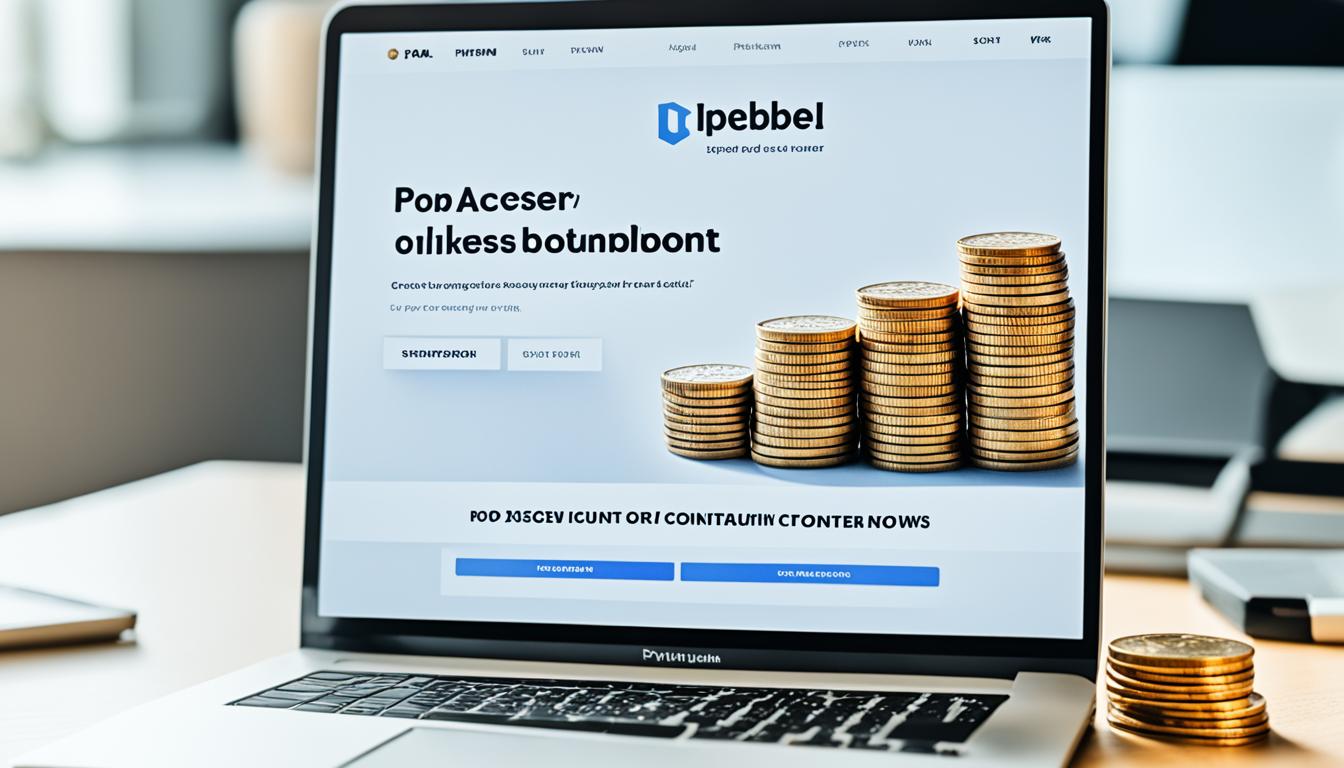Did you know over 75% of the world’s top media companies use paywalls for their online content? This fact shows how common it is to make money through subscriptions and exclusive content. As a blogger, you might think about using a paywall to earn more and connect better with your loyal readers.
Deciding to add a paywall to your blog’s premium content is a big choice. Paywalls can be a steady way to make money and make your brand seem more valuable. But, they might also push away readers and hurt customer loyalty if not done right. With the right approach and knowing what your readers like, you can create a strong community around your best content.
This article will look into paywalls, the different models out there, and how to set one up on your blog. We’ll talk about the benefits, challenges, and best practices. This way, your paywall strategy will match your content and business goals.
Understanding the Concept of a Paywall
In the digital world, paywalls are now a key way for creators and publishers to make money. A paywall stops people from seeing content unless they pay or sign up for a service. This method helps publishers earn from their top-quality content, making sure it’s not given away for free.
What is a Paywall?
A paywall stops people from getting to digital stuff like articles, videos, or audio until they pay or subscribe. This method is getting more popular in the digital media world. Creators and publishers use it to make steady money and build a group of paying fans.
Types of Content Behind a Paywall
Many kinds of content can be hidden behind a paywall. This includes:
- Exclusive premium content like deep journalistic pieces, investigative reports, or special industry studies
- Restricted content such as old articles, specific niche resources, or behind-the-scenes stuff
- Any digital media that’s valuable enough for readers to pay for, like e-books, video lessons, or online courses
The main idea is to offer content that’s so good, people will pay for it. The success of a paywall depends on giving your audience real value.
Hard Paywalls vs. Soft Paywalls
Choosing between a hard and a soft paywall for your blog is important. It depends on your content and audience. Knowing the differences between these two is key to picking the best strategy.
Rigid Access Restrictions with Hard Paywalls
A hard paywall blocks all content until visitors pay a fee. This makes sure your premium content stays exclusive to paying customers. But, it might stop some readers who don’t want to pay.
Flexible Options with Soft Paywalls
A soft paywall offers more choices. You can use the freemium model, metered paywall, or dynamic metering. This lets visitors read some content for free before hitting the paywall. It’s a good way to make money and keep a big audience.
Choosing between a hard and a soft paywall depends on your blog’s goals and audience. Think about the pros and cons of each to find the best strategy for you.
Benefits of Implementing a Paywall for Premium Content
Using a paywall for your premium content has many benefits for creators. It helps you make a steady income, improve your brand, and build a community of loyal readers.
Consistent Revenue Stream
Paywalls turn your loyal readers into paying subscribers. This means you don’t just rely on ads for money. You get a steady income that helps you make better content for your audience.
Enhancing Brand Perception
With a paywall, you show your content is top-notch and worth paying for. This makes your brand look better and more trustworthy. People see you as an expert in your field.
Also, a paywall creates a community of readers who care about your content. These fans are more likely to give feedback, share your work, and spread the word about your brand. This helps you reach more people and grow your reputation.

A paywall is a powerful tool for creators. It brings in steady money, boosts your brand, and builds a community of loyal readers. These benefits are key to the success of your blog or online publication over time.
Building a Loyal Community with a Paywall
Using a paywall can help you build a loyal group of paying subscribers. Your paywalled content becomes exclusive and valuable. This creates a stronger bond with your most dedicated readers.
This loyal group can give you steady income and more engagement. It also boosts your brand’s image.
To create a strong paywall community, make sure your content is worth paying for. Talk to your subscribers often, asking for their thoughts and needs. Give them special perks like behind-the-scenes looks or private chats to make them feel special.
- Build a community by starting discussions and letting subscribers talk to each other.
- Help subscribers connect with you and others, making them feel they belong.
- Always ask for feedback to make sure you’re meeting their needs and likes.
By taking care of a group of paying subscribers, you can have a steady income for your blog or site. The paywall does more than just make money. It helps you build strong relationships with your biggest fans.
| Key Strategies for Building a Paywall Community | Benefits of a Thriving Paywall Community |
|---|---|
|
|

Paywall for Blog Content: Key Considerations
Before setting up a paywall for your blog, know what your audience likes and expects. Find out what kind of content they’re willing to pay for. Are they used to getting your content for free, or do they want premium content?
Understanding Your Audience’s Preferences
Take time to learn what your audience likes. Use surveys, check website stats, and talk to your community. Find out what they really want, like deep analysis, exclusive interviews, or behind-the-scenes stuff. Make your paywall plan fit their needs and what they expect.
Ensuring Content Quality
With a paywall, your content must be top-notch to make it worth the cost. Create content that’s valuable, informative, and engaging. It should be better than what’s free elsewhere. Always check and improve your content to keep up with your readers’ expectations.

By knowing what your audience likes and offering great content, you can make a successful paywall for your blog. This will make your readers happy and help you make money.
Choosing the Right Paywall Model
Choosing the right paywall model for your blog is key. You have three main options: the freemium model, metered paywalls, and dynamic metering. Each has its own way of offering access and flexibility. It’s important to look at the pros and cons to find the best fit for your blog and readers.
The freemium model lets readers see some content for free. Premium content is behind the paywall. This can draw in new readers and turn them into subscribers over time.
Metered paywalls limit how much content you can access for free each month. You’ll need a subscription after that. This method can make readers loyal subscribers by making them want to keep reading.
Dynamic metering is more flexible. It changes how many free articles you get based on things like how much you engage with the content or what device you use. This approach gives a more tailored experience and can improve your paywall strategy over time.
When picking a paywall model, think about your content, your audience, and your business goals. The right paywall can create a steady income and build a community of dedicated readers.

| Paywall Model | Description | Pros | Cons |
|---|---|---|---|
| Freemium | Offers a mix of free and premium content |
|
|
| Metered | Restricts access to a specific number of articles per month |
|
|
| Dynamic Metering | Adjusts the number of free articles based on user behavior |
|
|
Setting Up a Paywall on Your Blog
Adding a paywall to your blog can help you earn steady income and grow a dedicated subscriber base. First, pick a trusted paywall service that fits your blog’s style and goals.
Choosing a Paywall Service
Think about these points when picking a paywall service:
- How easy it is to add to your blog
- How you can make your paywall look like your blog
- The different prices and ways to subscribe
- Tools to see how well your paywall is doing
Services like MemberPress, Stripe, and Paywalled have many features and prices for blogs of all sizes and earnings plans.
Creating Membership or Subscription Plans
After picking a paywall service, build your membership or subscription plans. Think about what your readers will get and set your prices right. You might offer:
- Basic Membership – Access to some premium content
- Premium Subscription – All paywalled content and special features
- Patron or Supporter Levels – More expensive plans with extra benefits
Try out different prices and plans to see what works best with your readers and meets your income goals.

Choosing the right paywall service and making plans that your readers like can help you succeed with your blog’s paywall.
Optimizing Your Paywalled Content for Search Engines
Adding a paywall to your blog can make SEO tricky. Search engines like Google can’t see content hidden by a paywall. But, with smart strategies, you can keep your paywalled content visible and indexed. This helps bring more traffic to your site.
Flexible sampling is a great way to help search engines see your paywalled content. It lets them index part of your content. This gives readers a sneak peek, making them want to subscribe for more. By managing your indexing well, you can make sure your paywalled content SEO works well.
- Use flexible sampling to let search engines see your paywalled content
- Plan a smart indexing strategy that balances being open and exclusive
- Make your paywalled content better with the right keywords and meta tags for paywalled content SEO
- Keep an eye on and tweak your paywalled content SEO to get the best visibility and engagement
Following these tips can help you make the most of your paywalled content. It will drive traffic, grow your subscriber base, and boost your blog strategy.
Measuring the Success of Your Paywall Strategy
It’s key to track your paywall strategy’s performance to make sure it’s working well. By watching important metrics, you can make your approach better and grow more. Let’s look at the main KPIs to check how well your paywall is doing.
Revenue Growth from subscriptions or memberships shows how well your paywall is doing. Keep an eye on your revenue growth to see how your paywall affects your money.
Subscriber Retention rates are very important to watch. High subscriber retention means your paywalled content is hitting the mark with your audience. Look at your subscriber churn often to find ways to get better.
Last, Customer Engagement with your paywalled content matters a lot. Watch things like page views, time spent, and how people interact with your premium content. This tells you how your audience is connecting with your content. It helps you make your content strategy better and give more value to your subscribers.
By checking these paywall performance metrics often, you can make smart choices to improve your paywall strategy. This leads to more revenue growth and a loyal group of subscribers.
| Metric | Description | Importance |
|---|---|---|
| Revenue Growth | Increase in subscription or membership fees | Indicates the financial success of the paywall |
| Subscriber Retention | Percentage of subscribers who remain active | Measures customer loyalty and content quality |
| Customer Engagement | Engagement metrics like page views, time spent, and content interaction | Reveals how your audience is engaging with the premium content |
Promoting Your Premium Content
To get readers to your paywalled content, you need to promote it well. Use content marketing strategies like sharing teasers on social media. Also, use your email list to show off what’s exclusive. And, create engaging previews to draw in potential subscribers.
Promoting your premium content is key to getting more traffic and loyal subscribers. Share sneak peeks and highlights on social media and your email list. This will grab your audience’s attention and make them want to sign up for your paid content.
Think about making short, catchy previews or samples of your premium content. This could be excerpts from member-only blog posts, teasers for exclusive podcast episodes, or sneak peeks of premium e-books or online courses. Sharing these through your content marketing channels can build excitement and increase subscription sign-ups.
- Leverage social media to share teasers and highlights of your premium content
- Utilize your email list to promote exclusive offerings and draw attention to your paywalled content
- Create engaging previews or samples to give readers a taste of your premium content and entice them to subscribe
With a strategic approach to promoting your premium content, you can build a loyal subscriber base. This will help increase your blog’s revenue and profitability.
Addressing Common Concerns About Paywalls
When thinking about adding a paywall to your premium content, you’ll want to tackle some common worries. One big worry is that paywalls might alienate your audience. Readers might get upset if they can’t get to the content they’re used to reading for free. To fix this, it’s key to talk openly and clearly about your move to a paywall. Highlight the benefits readers will get for paying.
Another worry is how paywalls affect content accessibility. By making some content only available to subscribers, you might reduce its reach. To lessen this, mix free and paid content. This way, your main audience can still get important info without feeling too limited.
- Make sure your paywalled content is truly worth the cost. Offer high-quality, engaging, and unique stuff that really adds value.
- Think carefully about your pricing structure. Aim for a balance between making money and keeping things affordable for your readers.
- Keep an eye on user feedback and be open to changing your paywall plan as your readers’ needs and likes change.
By tackling these common concerns and focusing on what your audience needs, you can make a paywall work well. It will help keep your content and brand going strong in the long run.
Paywall Best Practices for Bloggers
When you set up a paywall for your blog, it’s key to follow best practices for success. Make sure your content is top-notch and worth the cost for your readers. Also, make sure accessing your paywalled content is easy and smooth for your audience. This will make them happier and more likely to stay with you.
Offering different options, like freemium or metered models, helps meet your readers’ varied needs. This way, you can make money and keep your readers engaged. Finding this balance helps your paywall work well with your business goals and gets the best results.
- Always create content of exceptional value that your audience wants to pay for.
- Make sure your paywall is easy for users to get through to your premium content.
- Try out different paywall models, such as freemium or metered paywalls, to see what works best for your content and audience.
- Keep an eye on how your paywall is doing and tweak it as needed to meet your business goals and your audience’s changing needs.
| Best Practice | Description | Benefits |
|---|---|---|
| Deliver Exceptional Content Value | Always make high-quality, detailed content that really adds value to your readers. | This makes your paywall worth it and builds trust with your readers. |
| Offer Seamless User Experience | Make sure your paywall is easy to use, with clear options and safe payment processing. | This makes users happier and makes signing up easier. |
| Provide Flexible Paywall Options | Try out different paywall models, like freemium or metered, to fit what your audience likes. | This helps you turn more readers into paying subscribers. |
By using these paywall best practices, bloggers can make a steady income and give their audience a great experience. This method can help you grow a community of paid subscribers and keep your blog successful over time.
Alternative Monetization Strategies for Blogs
A paywall is a good way to make money from your blog, but it’s not the only choice. You might want to mix different ways to make money based on your content and goals. This can help you earn more money.
Advertising is a common method. You can use display ads, sponsored content, or affiliate marketing to make money from your readers. Working with brands for sponsorships can also be profitable. It lets you use your blog’s influence to earn more.
Selling digital or physical products is another way to make money. This could be eBooks, online courses, or merchandise that fits your niche. By using your blog, you can sell your own products and earn more.

